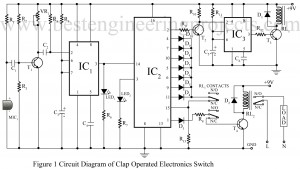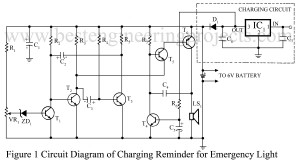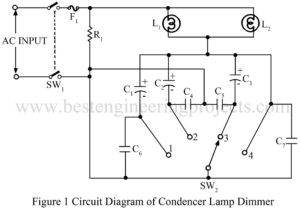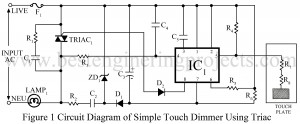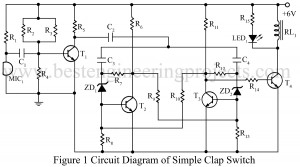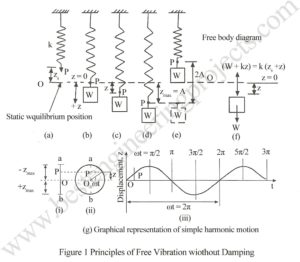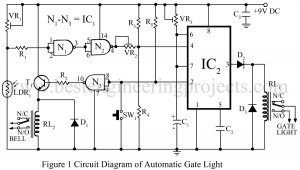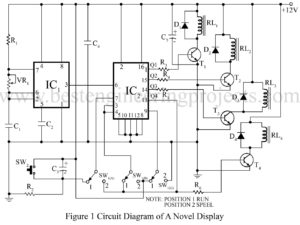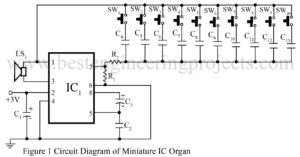The clap switch circuit is not a new idea for the electronics hobbyist. Previously we had posted a simple clap-operated switch. Now, here is a clap switch circuit using 555, used to control any appliance by clapping five times. We used here decade counter for the right clap code i.e. only the right clap activates the appliance (five claps within the preset time interval of 10 seconds). Description of Clap Switch Circuit Using 555 The clap switch circuit using 555 is built around timer IC 555, decade counter IC CD…
Read MoreCharging Reminder for Emergency Light
When the battery is kept in the discharge state for a long period, irreversible chemical reaction takes place reducing the capacity of the battery so that eventually the battery becomes useless. No protection circuit can stop self discharge of the battery and only trickle charging on compensate for it. Here is a circuit charging reminder for emergency light to inform the user that the battery has discharged itself below the safe level. The discharge characteristics of a dry battery, as supplied by its manufacturer indicate that the battery should not…
Read MoreShort Proof Variable Power Supply Circuit
This is a complete short-proof variable power supply circuit that gives 3V, 5V, 6V, 9V, 12V, and 15V output voltage and a maximum output current of 700mA. The unique feature of the circuit short proof variable power supply is that the power dissipated is reduced to a negligible level during short-circuit or overload conditions. In conventional power supplies, the maximum rated current continuously flows through the load under overload conditions. This may damage the power supply and the load. Working of Short Proof Variable Power Supply Circuit The circuit short-proof variable…
Read MoreLight Dimmer Circuit
Various type of dimmer circuit is already available online, and the idea of lamp dimmer is not new to electronics hobbyist. This light dimmer circuit is very efficient because no power is dissipated in the resistive elements. In SCR light dimmers the firing angle is controlled as a result of which the waveform is distorted. But it is not so with this circuit. The load in this case always works with sine wave irrespective of power delivered to the load or the type of load. The brightness of the lamp…
Read MoreTouch Dimmer Circuit
We have already posted a dimmer using a capacitor called “Light Dimmer Circuit.” Now, here is a Touch dimmer circuit using a triac. Circuit Description of Touch Dimmer Circuit Using Triacs The heart of the circuit touch dimmer using triac is the S576 (IC1), which provides an uncomplicated and elegant method of firing the triac. The IC is not very sensitive to power glitches and works on the 15V dropped by R2 and C2. Zener Diode ZD1 clamps the voltage at 15V, while D1 and C3 smooth the supply. The…
Read MoreClap Switch Circuit
The circuit for the clap switch is not a new idea for electronics hobbyists. After a long experiment here we design and verified a simple clap switch circuit. Description of Clap Switch Circuit The circuit presented here “Clap Switch” consists of a silicon transistor and is divided into three main sections i.e, Audio trigger stage Bistable multivibrator stage Relay operation stage The audio trigger stage is built around a microphone and transistor T1. Microphone changes the sound of a clap in electrical signal and is given to the base of…
Read MoreTheory of Vibration | Simple Harmonic Motion
Theory of Vibration The response of a machine foundation is generally analyzed by Lumped Parameter Approach. In this approach the foundation is represented quite well by a mass, spring and a dash-pot and the problems are usually studied under following headings. Free vibration of a mass spring system without damping Free Vibration of a mass spring system with damping Forced vibration of a mass spring system without damping Forced vibration of a mass spring system with damping The properties of Simple Harmonic Motion are to be understood clearly to make…
Read MoreAutomatic Gate Light Circuit
While returning home on a cold winter night it can be really frustrating if one is unable to unlock the gate due to insufficient light. A simple, economic yet reliable solution to the problem is provided by the project “Automatic Gate Light Circuit”. When it is quite dark, a slightly pressure on the bell switches the gate lights on for a preset interval of time. The project automatic gate light circuit is also a valuable addition to domestic security arrangements as it deters unwelcome caller. Description of Automatic Gate Light…
Read MoreRunning and Spellar Effects of Light Circuit
There are many display circuits already published in BEP. But the circuit Running and Spellar Effects of Light Circuit is very special in its own way because it contains all the facilities required for any type of decoration. Lighting decoration broadly consists of two main categories-the running effect and the spellar effects. Running effect is well known to every electronics hobbyist. The spellar effect consists of many output driving the load-lamps; all of them go high one after another, and eventually all outputs becomes high simultaneously showing a complete display.…
Read MoreMiniature IC Organ Circuit
Here is a circuit for an miniature IC organ using 3-volt AF amplifier IC TDA2822. Frequency of the AF sound generated depends on the capacitor between pin 1 and pin 7 of IC. When switch SW1 to SW10 are pressed, different audio tones are heard from the speaker. SW1 to SW10 are small push-to-on switches. Pin 2 of IC is connected to positive terminal of 3-volt battery. Two pen cells connected in series can be used to power this circuit. Satisfactory loud sound will obtained at 3-volt supply. Note: Capacitors…
Read More